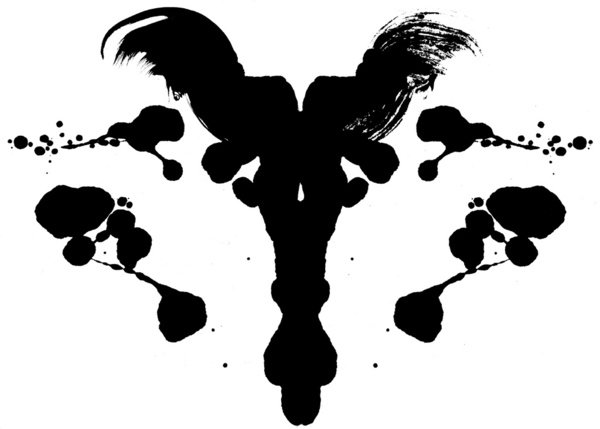
Are you ESTJ or INFP? ENFJ or ISTJ?
Chances are if you work for a big corporate, particularly an American one, you’ll be able to answer that question.
According to the Boston Globe, Myers-Briggs Type Indicator psychological testing is used by around 80% of Fortune 500 companies (and 89 of the Fortune 100), with around two million people taking the test every year.
Chances are if you work for a start-up or SME, these acronyms will be less meaningful. But there is some evidence that understanding personality types and how they work together could make a difference for your early-stage business.
(First, a word of warning: Myers-Briggs also has its detractors, who say splitting people into either/or types (extrovert or introvert, sensing or intuitive etc) is unscientific and ridiculously simplistic. But surely 400 Fortune 500 companies can’t all be wrong?)
I took the test recently and I got ENFJ – Extroverted, Intuitive, Feeling, Judging. My business partner Seb (who is also my real partner) was INTP – Introverted, Intuitive, Thinking, Perceiving.
Pretty much polar opposites. But apparently this is not a bad thing when you’re planning on running a start-up.
Research by Stanford, the University of California, and Tepper School of Business all showed that diverse groups are the most productive.
“The worst kind of group for an organisation that wants to be innovative and creative is one in which everyone is alike and gets along too well,” says Margaret A. Neale, professor of organisation and dispute resolution at Stanford Graduate Business School.
Yes, it’s harder to communicate, and easier to fall out, but what the research shows is that your team will have a better collective intelligence if it is made up of people with different personalities, as long as they also understand the differences between themselves and others.
Are you an entrepreneurial type?
ENTPs are often classified as the “entrepreneur” type – think Walt Disney and Apple co-founder Steve Wozniak – although there are also successful entrepreneurs with ENTJ (Bill Gates), and INTJ (Mark Zuckerberg) types. The thread here seems to be the tendency towards intuition over sensing – the ability to take risks based on gut instinct.
But a “sensing” focus – paying attention to physical reality, what you see, hear, touch, taste, and smell – is also critical for a successful business, according to Dr Daniel Robinson, an expert in applying Myers-Briggs psychological types at Iowa State University.
He argues an intuition-lead entrepreneur benefits from having a sensing-led person on their team.
“If Sensors are absent, the team has to consciously stop and remember to ask the kinds of questions that a Sensor (who is firmly reality-based, dealing with ‘what is’) – would ask. For example, have all the necessary facts, details, and data been discussed and addressed?”
Geoff Lorigan, founder and director of New Zealand’s Institute for Strategic Leadership, agrees. Based on observations of over 70 senior leadership teams over 12 years, he says the most effective teams are comprised of the four sets
of ‘types’ – The Visionary (NF), The Logical (NT), The Data and Specifics (ST), and The Relational (SF).
“Collectively they represent the gifts and talents of a ‘whole brain’, whilst offsetting many of each type’s blind spots.”
Being different and getting along anyway.
Sue Blair runs Auckland-based Personality Dynamics, helping businesses with identifying, understanding and working with different personality types within their teams.
She says she recently worked with a publishing company.
“I was brought in because the team manager was having great difficulties working with one of her staff. She thought this lady was a loose cannon who didn’t want to be managed. The manager couldn’t figure out how she operated at all, whereas her other staff member was a dream to work with.”
Blair took each staffer through the personality testing process.
“It turned out that the manager was an ISTJ – they run a tight ship, and like to be an anchor for their teams. They make sure all the boxes are ticked, procedures are followed and, most of all, that there are no surprises.
“The staff member she got on fabulously with, was (no surprises here) an ISFJ, a very similar personality with the difference of ‘feeling’ – making her accommodating and eager to please.
“The woman that was driving the ISTJ manager crazy was an ENFP. This type is an absolute ideas factory, and love to leave things to the last minute because they are 100% confident in their ability to ‘wing it’ successfully. You can see how these two personalities were head-butting at every turn!”

Image: Sue Blair, Personality Dynamics
Having the different personalities on the team had the potential for creating innovation, she says, but it wasn’t working because the women felt they couldn’t work together.
Doing the Myers-Briggs testing was key to solving the problem. Once the two colleagues knew what each other’s expectations and preferences were and why, they were able to tailor how they operated.
The danger zone
If you are an early-stage CEO and hiring based on Myers-Briggs, Blair says, you need to be a bit careful. People going for a particular role may (consciously or subconsciously) cheat on the test answers, tailoring them to the kind of role they’re in or want to have, she says. (I’m after a marketing job, so I’m sociable and have great ideas.)
Conversely, it’s important to remember that people that tend towards one personality type can still learn traits for the opposite personality. “Hiring someone [using only Myers-Briggs] could rule out someone who has consciously developed exactly the qualities you’re looking for. Discounting someone purely because of personality type is unethical and unwise.”
Complement MBTI with emotional intelligence and skills-based profiling, she says.
Personality Resources:
Find out your type ($49.95) –
www.mbtionline.com
Read Gifts differing: Understanding personality type by Isabel Briggs Myers, and You’ve got personality by Mary McGuiness
Try out card-sort tools with your team – www.personalitypuzzles.com
Who or what was Myers-Briggs?
The Myers-Briggs Type Indicator was invented by an American mother-daughter team, Katherine Cook Briggs and Isabel Briggs Myers. They took Carl Jung’s then ground-breaking theories on personality types and adapted them, initially, to help women entering the industrial workforce for the first time during World War II.
The idea was that understanding someone’s natural preferences (eg extravert or introvert, feeling or thinking) would help identify what type of war work would best suit an individual.
The indicator was created in 1942 and the handbook was first published in 1944.

Image: Dr. Mary McCaulley and Isabel Briggs Myers, circa 1975.




